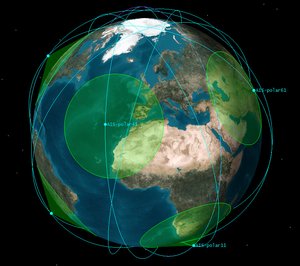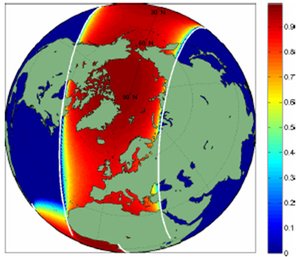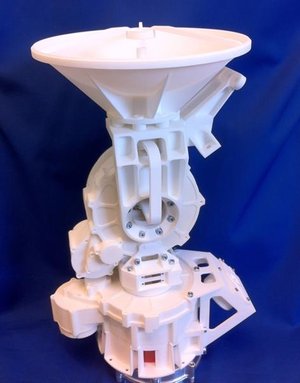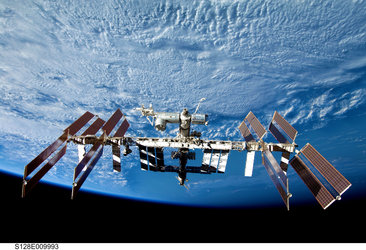Atlantis leaves Columbus with a radio eye on Earth’s sea traffic
The recent Shuttle mission to the International Space Station has brought ESA’s Columbus module a step nearer to beginning an ambitious experiment to track global maritime traffic from space.
Astronauts Michael Foreman and Randolph Bresnik installed the Automatic Identification System (AIS) antenna on the outside of Columbus during their second spacewalk of the STS-129 mission, on 21 November. This VHF antenna is designed to pick up signals from the standard AIS transponders carried by all international ships over 300 tonnes, cargo vessels over 500 tonnes and all types of passenger carriers.
The spacewalkers began by installing a Grappling Adaptor To On-Orbit Railing (GATOR) onto one of Columbus’s handrails, to which the antenna was attached. GATOR also enabled the attachment of a second Amateur Radio on the International Space Station (ARISS) antenna onto Columbus, to be used for ham radio, during the six hour, eight-minute spacewalk – around an hour of which was devoted to ESA work. Space Shuttle Atlantis returned to Earth on 27 November.
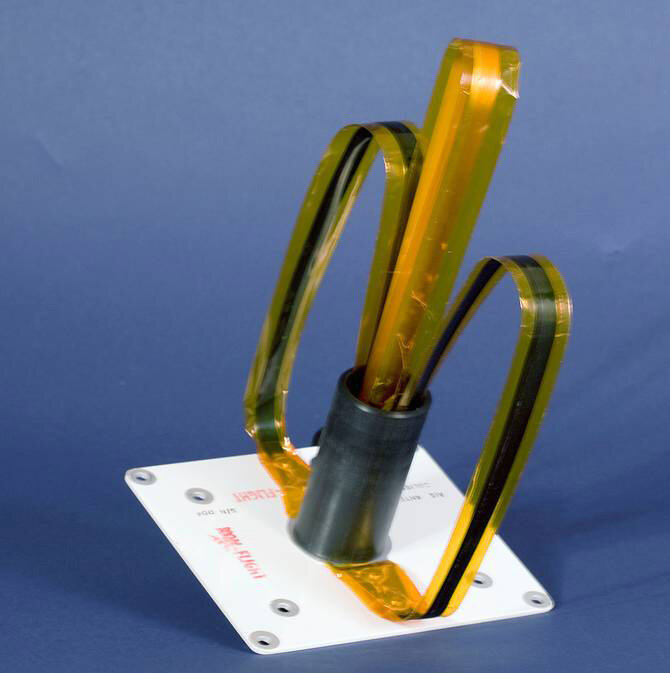
Both AIS and ARISS antennas were developed by the ARISS organisation in collaboration with ESA. They were installed on the Earth-facing starboard side of Columbus, the AIS antenna placed forward and the ARISS antenna aft.
The AIS antenna is connected to a pair of receivers inside Columbus. “Both AIS receivers have been developed as an In-Orbit Demonstration project of ESA’s General Support Technology Programme (GSTP),” explained Karsten Strauch, ESA project manager of the COLAIS (Columbus AIS) project. “While GSTP is devoted to developing flight-ready hardware, the In-Orbit Demonstration element moves activities one stage further by actually providing European industry with opportunities for test flights.”
The NORAIS receiver was developed by the Norwegian Defence Research Establishment with the support of the company Kongsberg Seatex. The LUXAIS receiver stems from LuxSpace. Once the COLAIS experiment is ready, the receivers will operate alternately, switching every three months. Both receivers were delivered by Japan’s HTV-1 supply ferry in September.
Challenge of orbital AIS detection

The internationally mandated AIS system enables port authorities and coast guards to track seagoing traffic. But the onboard transponders have a horizontal range of only around 74 km. This is sufficient for coastal tracking or ship-to-ship monitoring but means that traffic on the open ocean disappears into vast blind spots.
AIS signals do reach much further in the vertical direction – all the way up to the 400 km orbit of the ISS. So the aim is to demonstrate space-based ship monitoring techniques using Columbus as a test platform, as a first step towards an operational AIS-monitoring service based on constellations of satellites for worldwide coverage.
Experiment employing new computer technology

The final element needed to begin the two-year COLAIS experiment is ERNObox. It is a prototype computer based around a new generation of ESA-developed processor chips, its name coming from the German for ‘modular computer in low Earth orbit’.
“The ERNObox has already flown aboard Columbus as what is known as a SDTO – Space Station Test Objective – from February 2008 to July 2009,” said Horst Koenig, Head of ESA’s System Engineering section. “Its original purpose was to assess a new processor and other technologies in the space environment. Following its return to Earth with STS-127 in July 2009, it was refitted to serve as a data relay for the COLAIS experiment, and will return to the Station once a flight is available, though not earlier than February 2010 depending on upload constraints for ESA payloads.”
The ERNObox has been built by Astrium Space Transportation in Germany. Astrium is also responsible for the overall system integration of COLAIS.
The ISS focus on Earth observation

COLAIS is part of the trend of using the ISS as a platform to observe and monitor Earth. The Station’s orbital inclination of 51.6° and altitude of 350–460 km are different to those of most Earth observation satellites, offering other ground patterns over about 95% of Earth’s population.
ESA has issued a Call for Ideas to gauge the interest in deploying remote-sensing instruments for global change experiments on the ISS. Depending on the level of interest and the suitability of the research proposals, it may be followed by a specific Announcement of Opportunity for instruments or multi-user payloads.
More information on the Call for Ideas can be found at the link to the right. For further information on the AIS receiver experiment contact Karsten.Strauch @ esa.int






